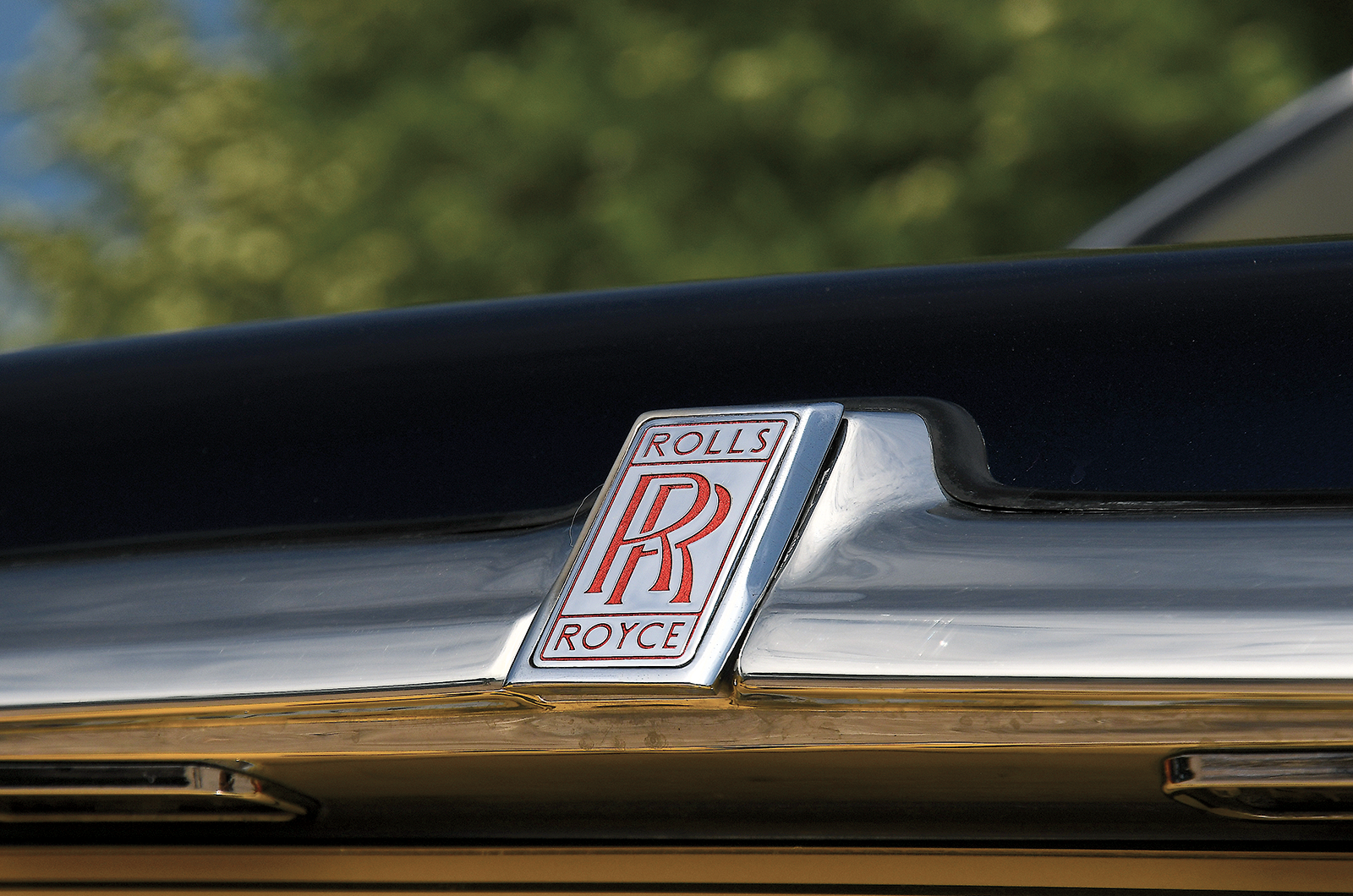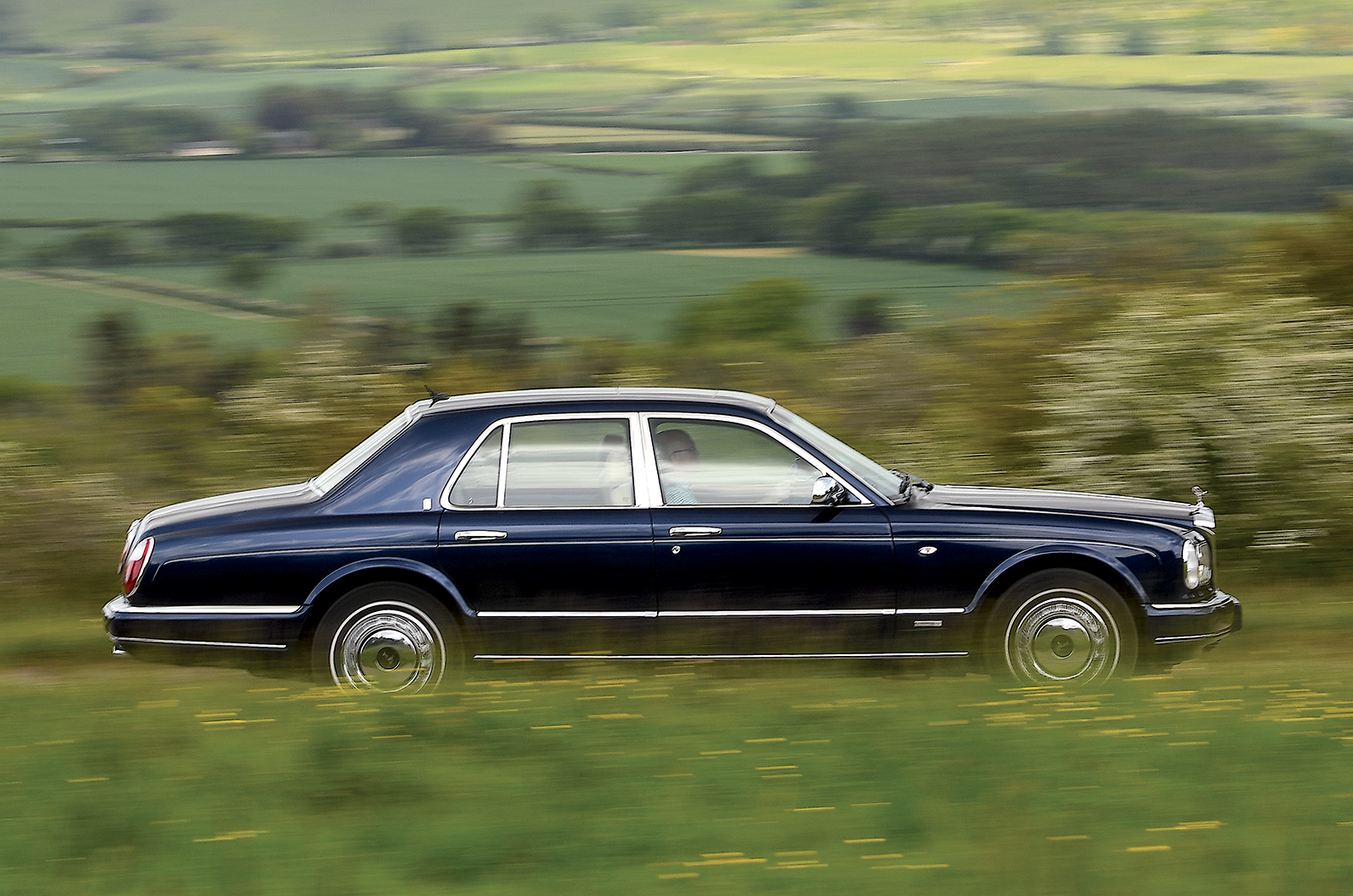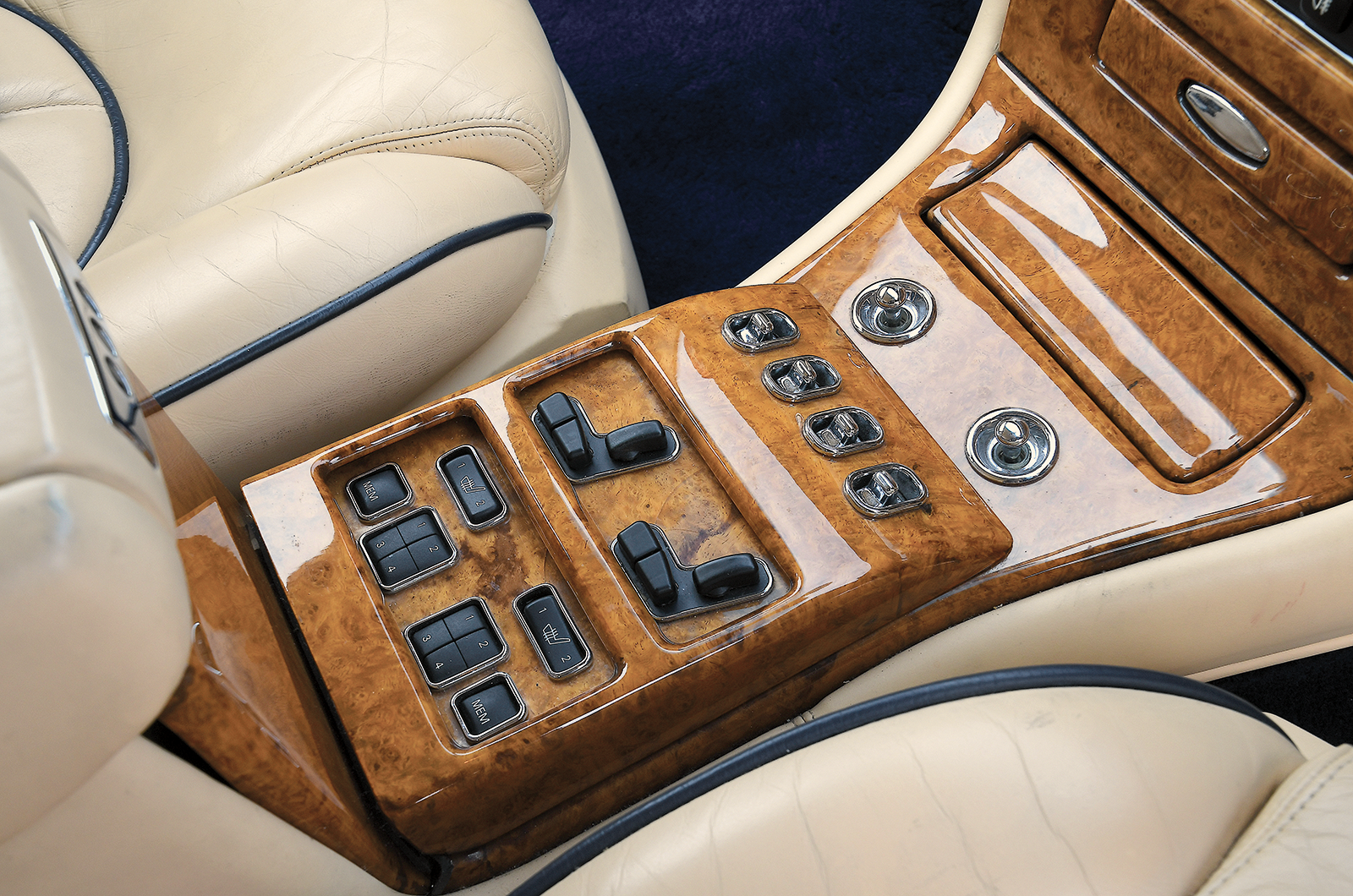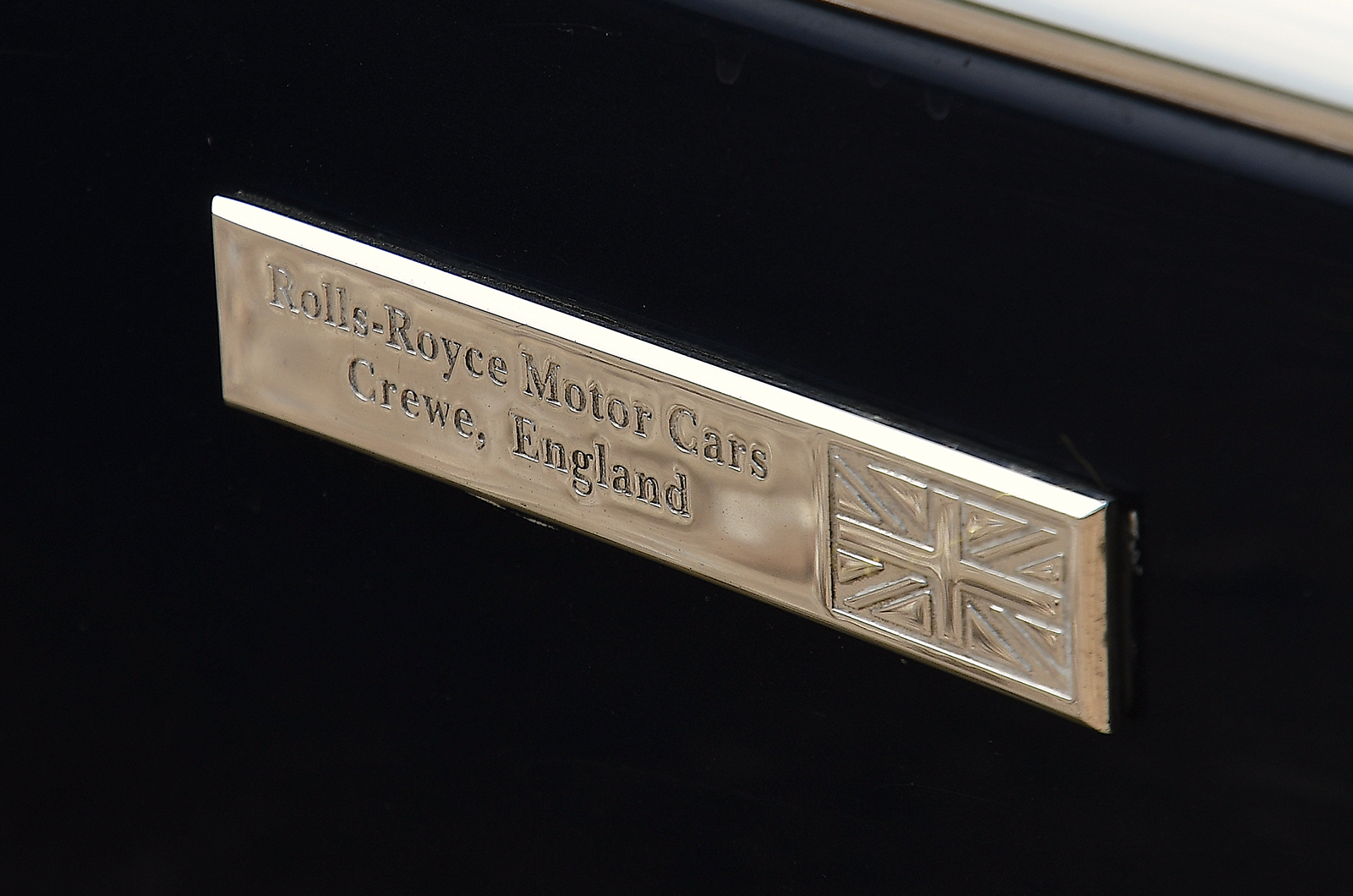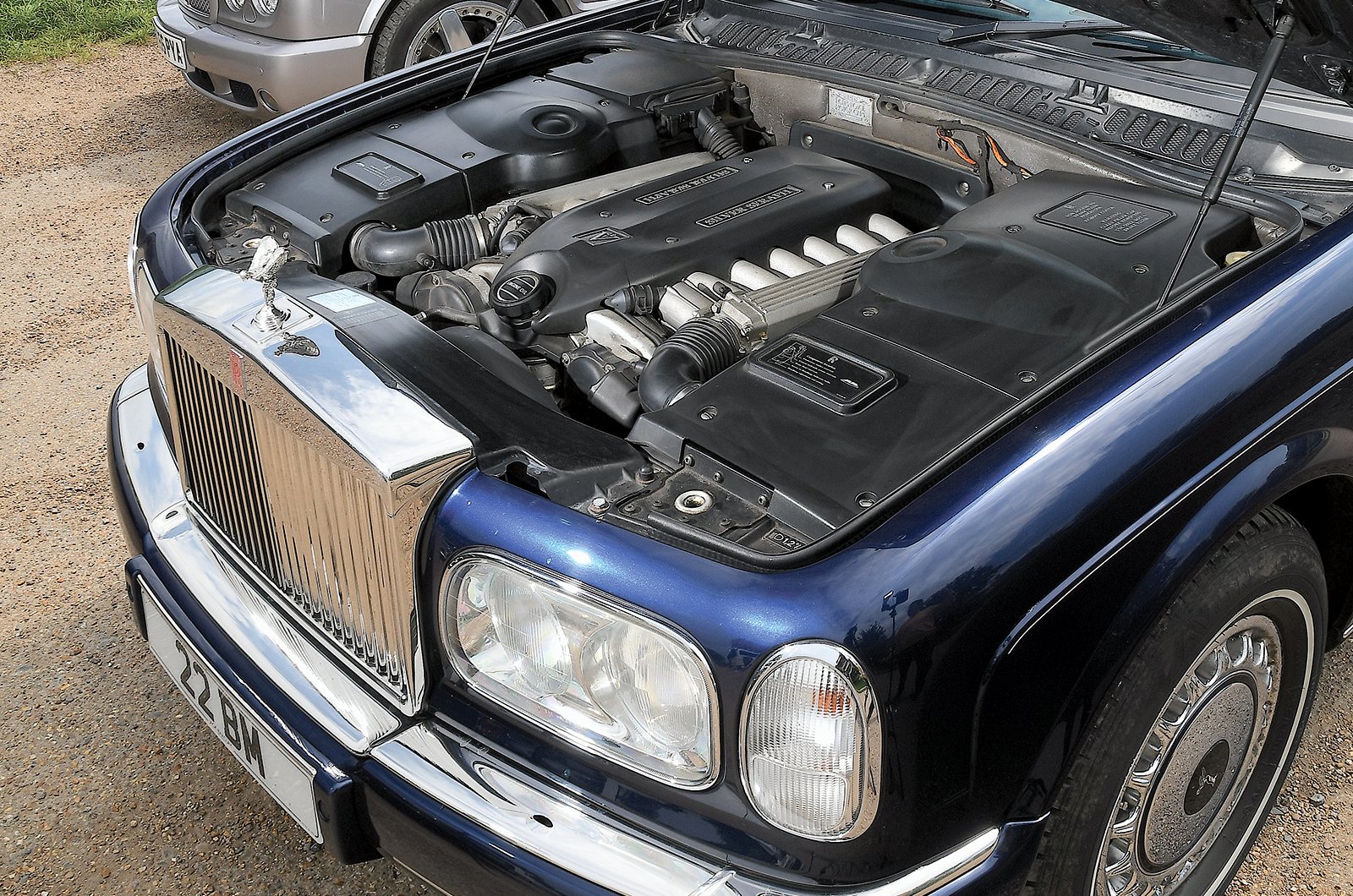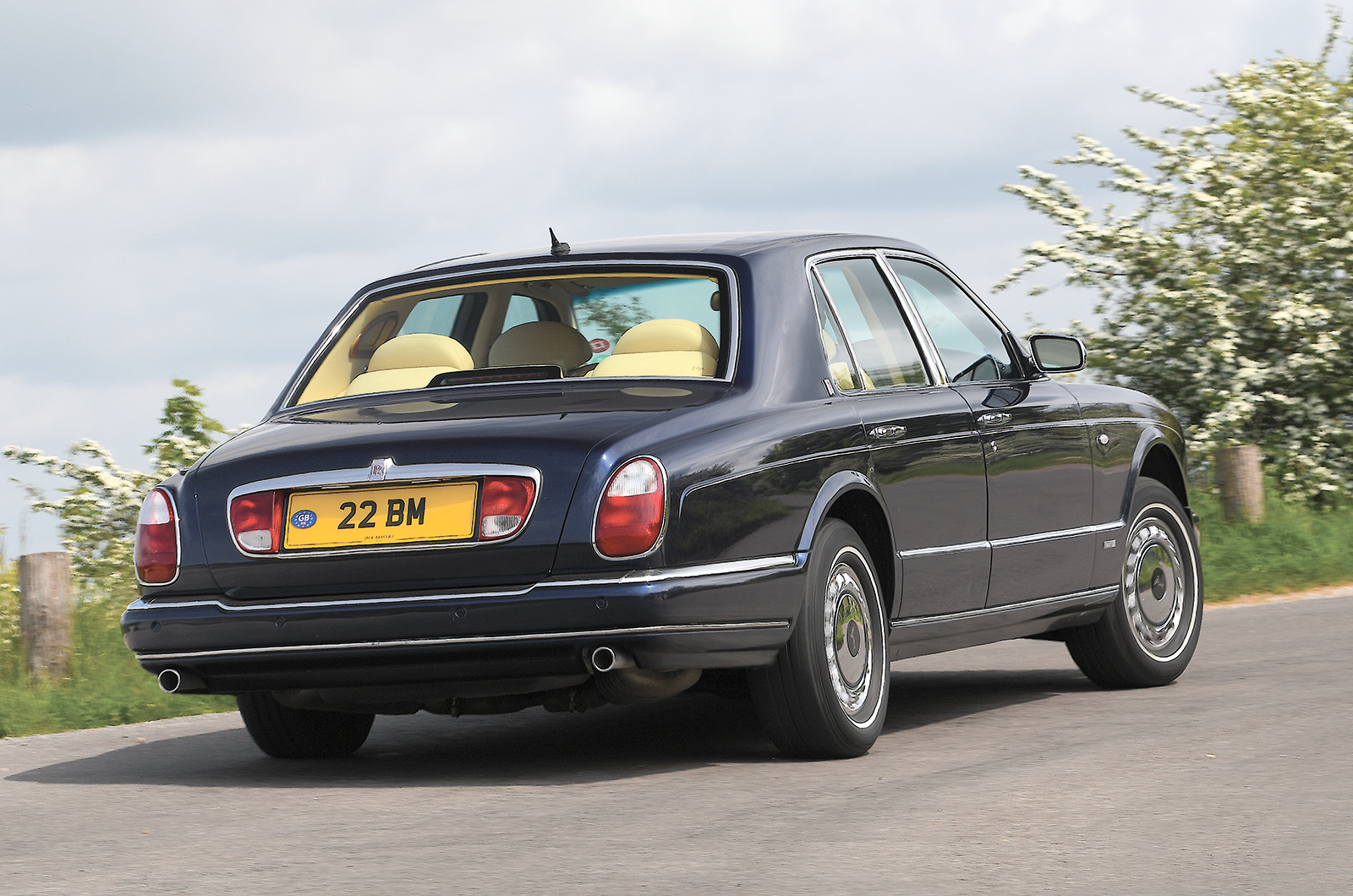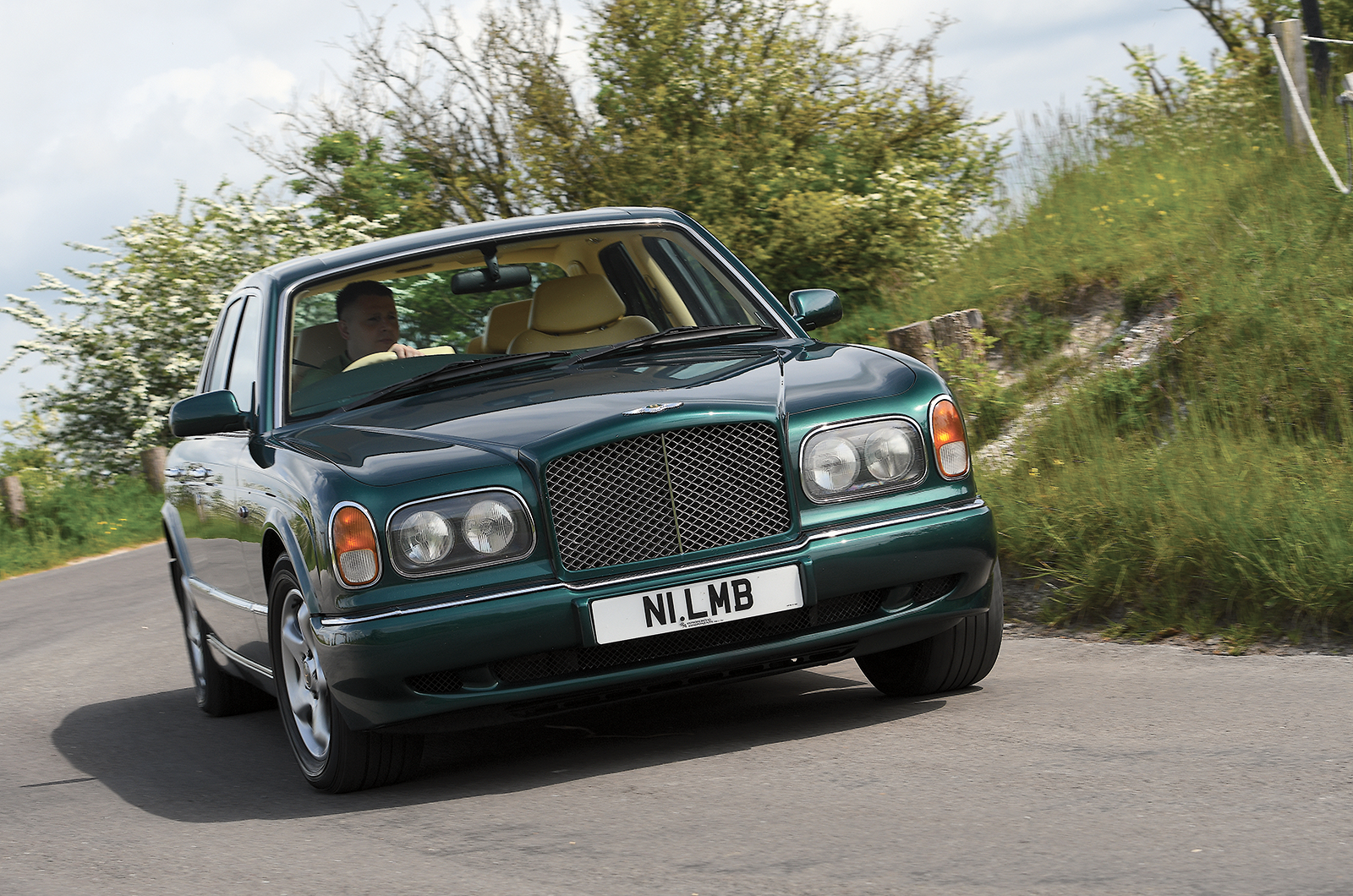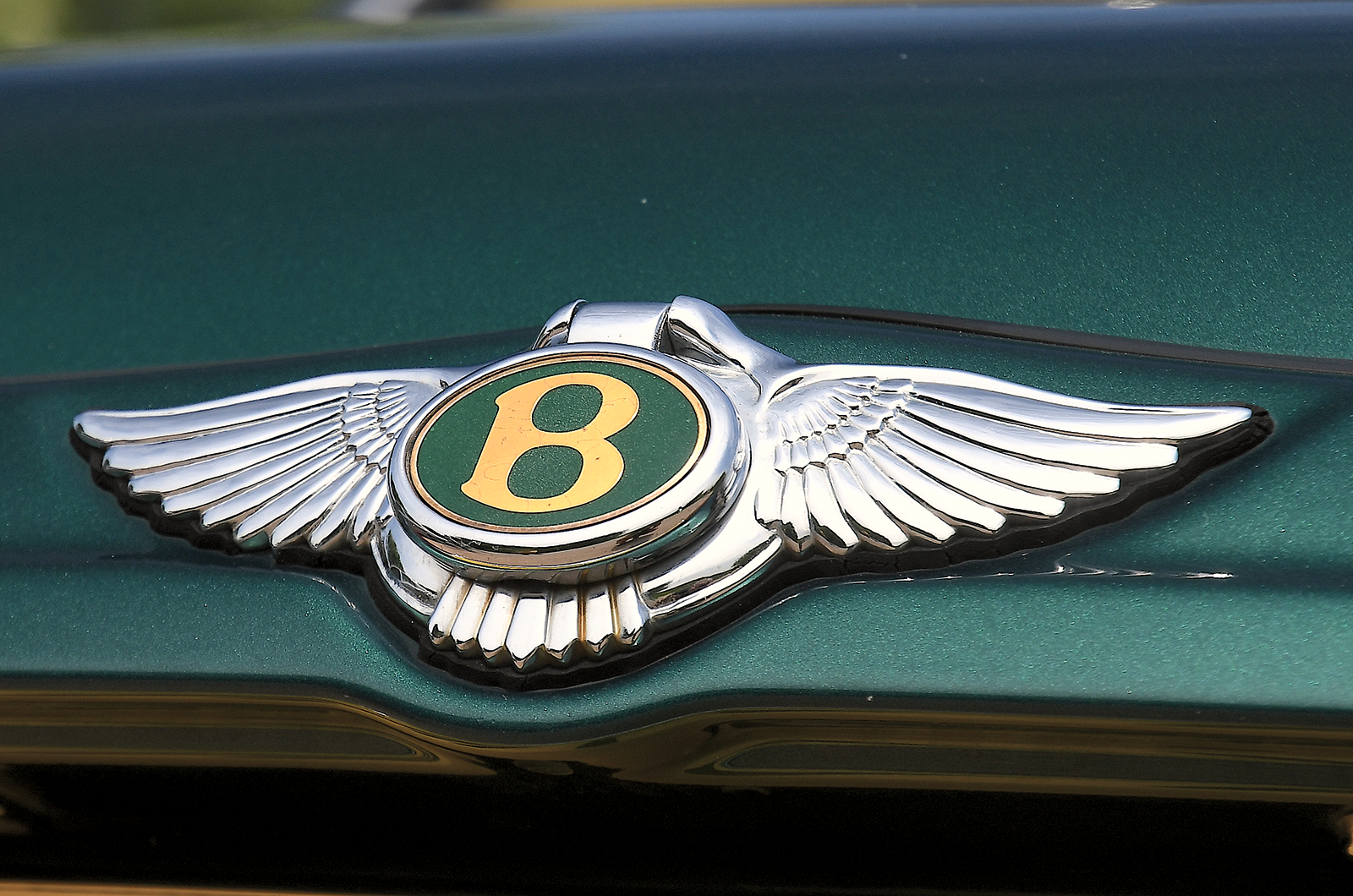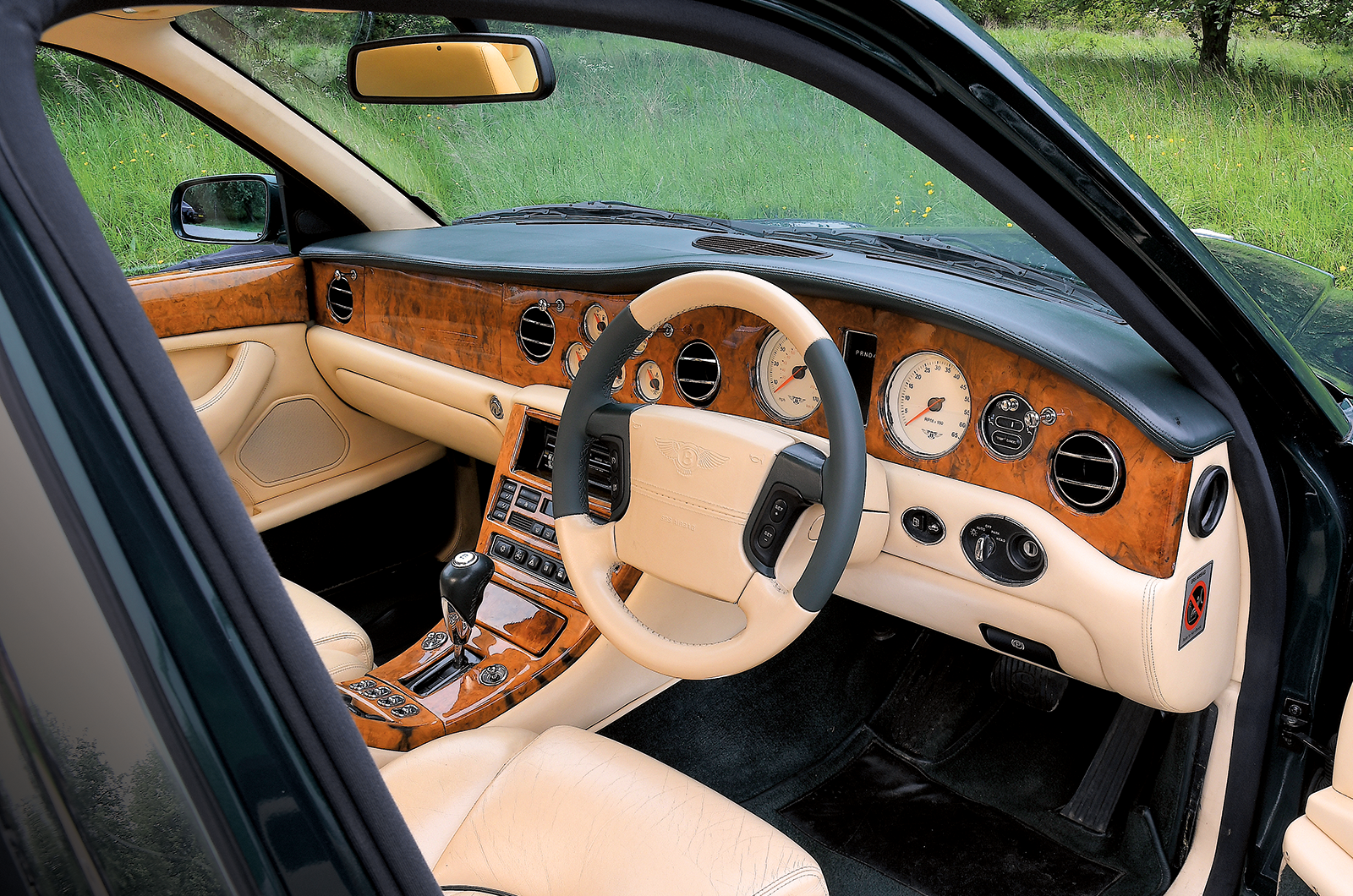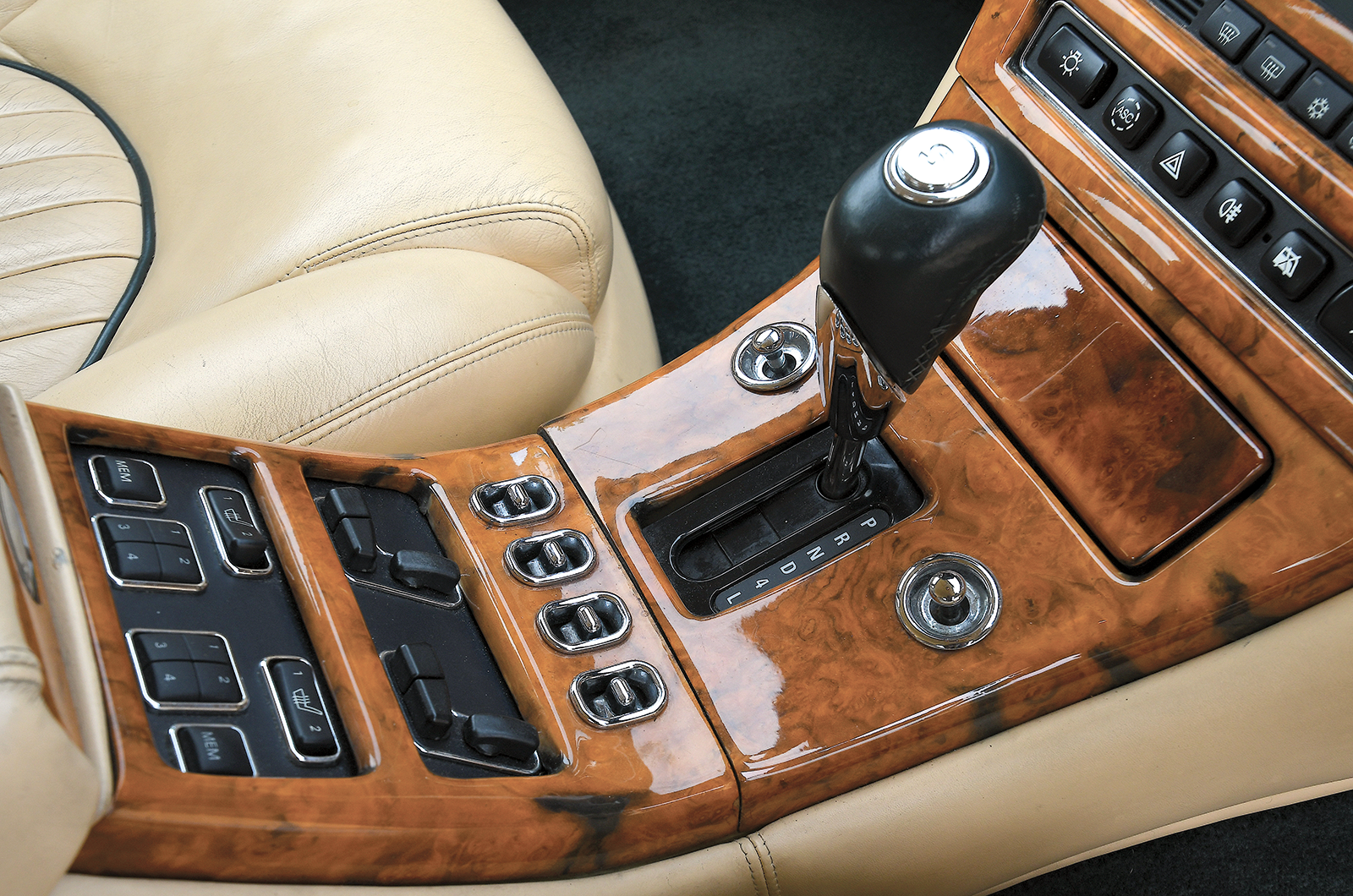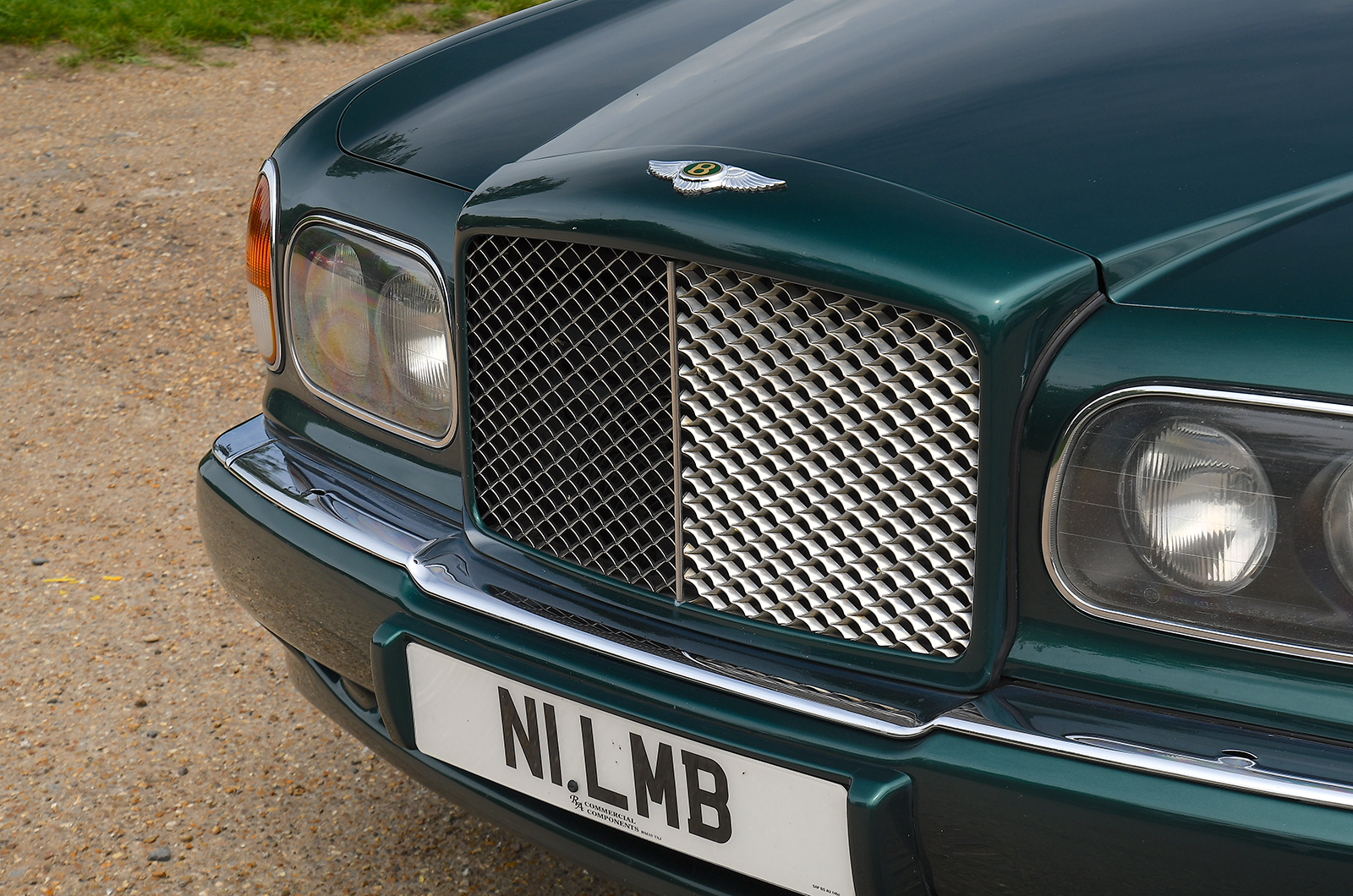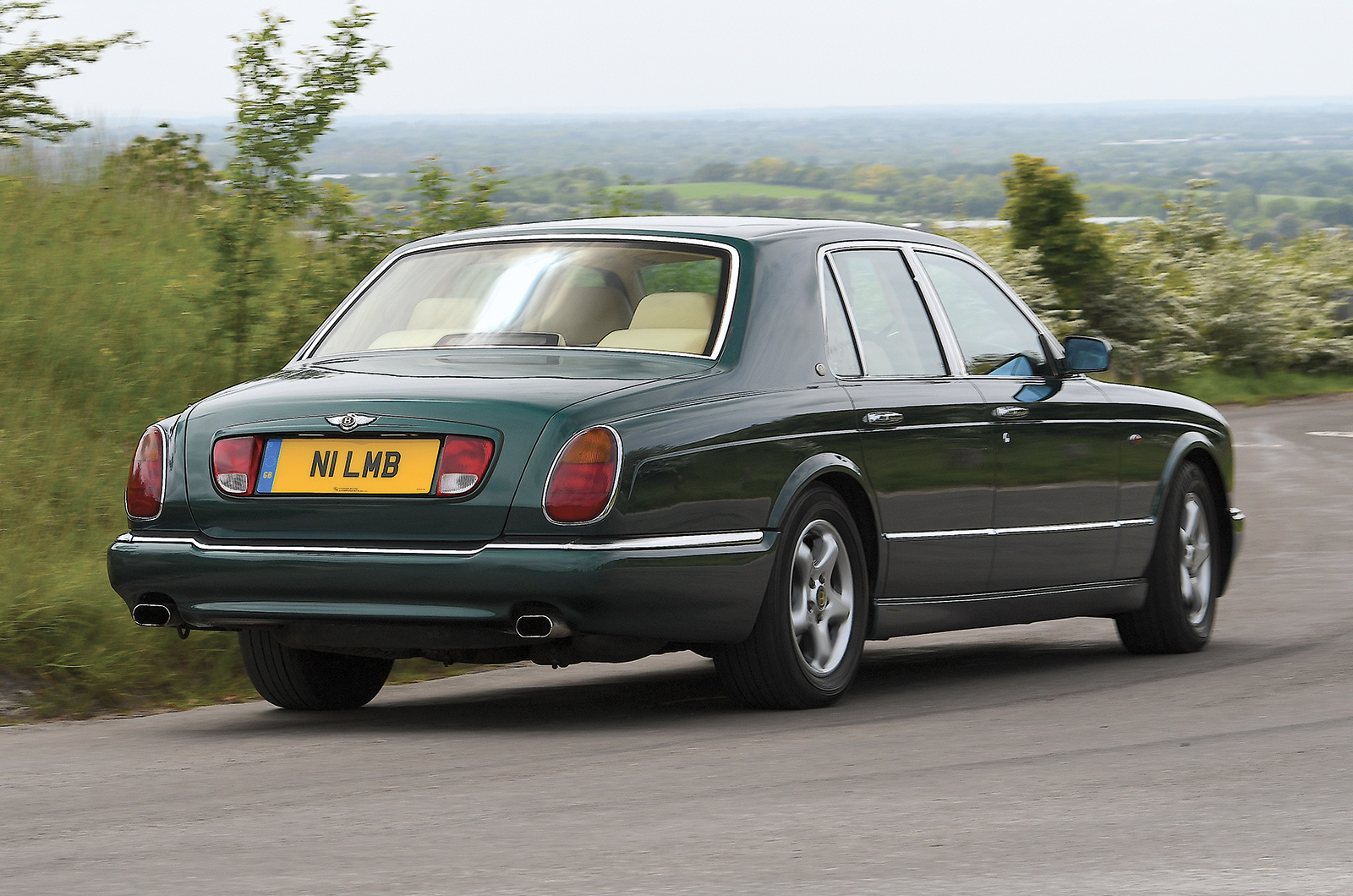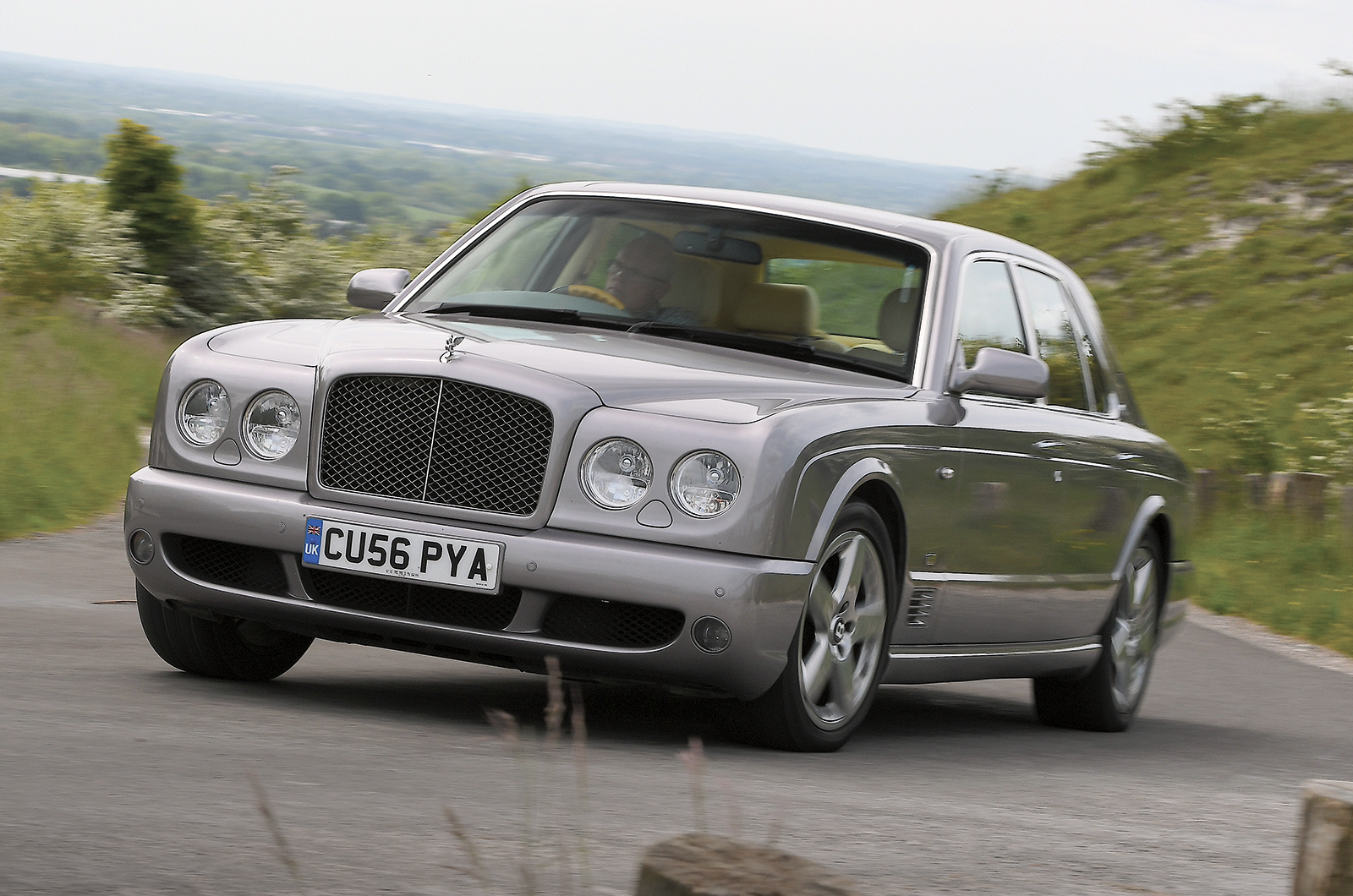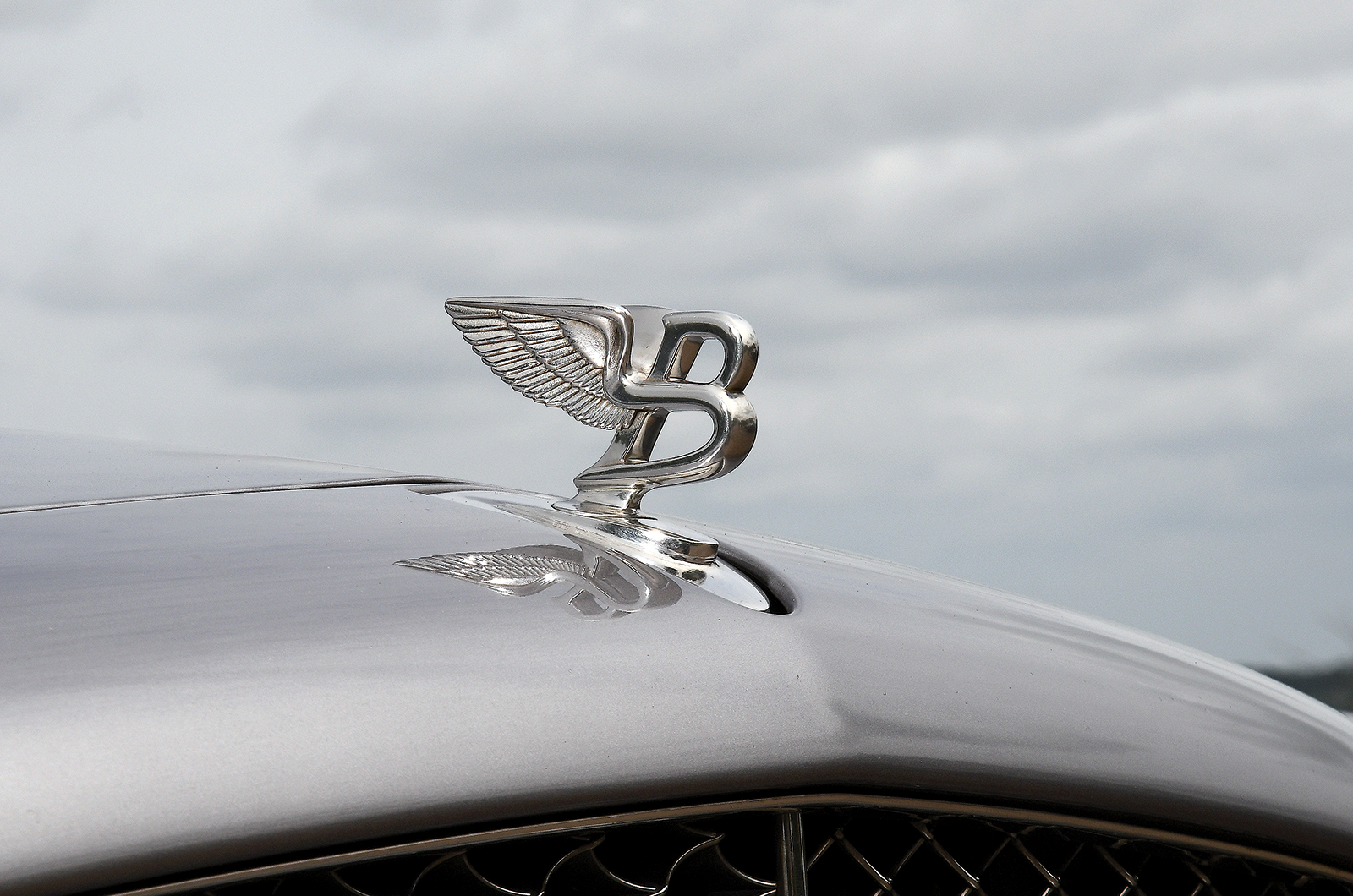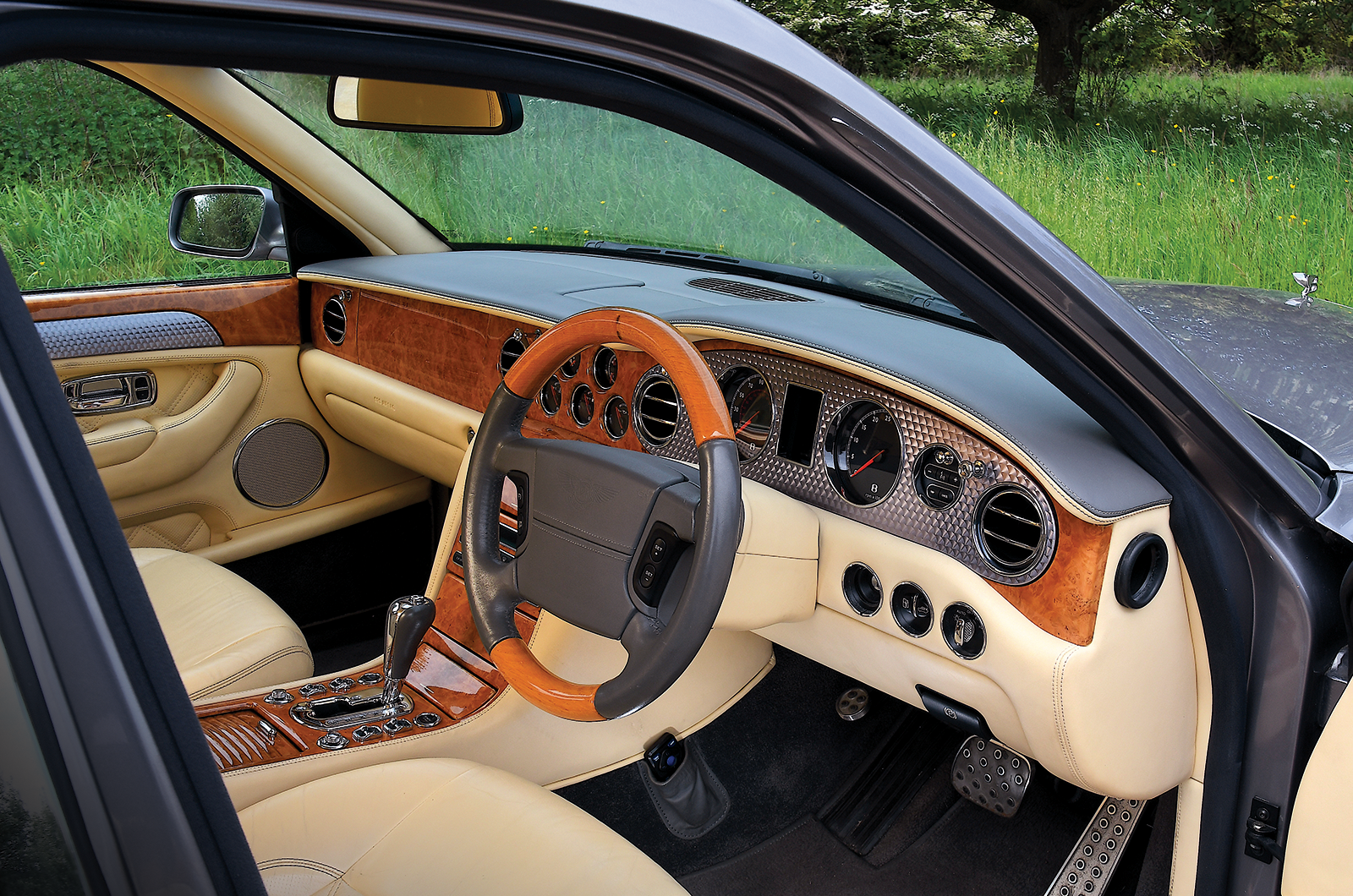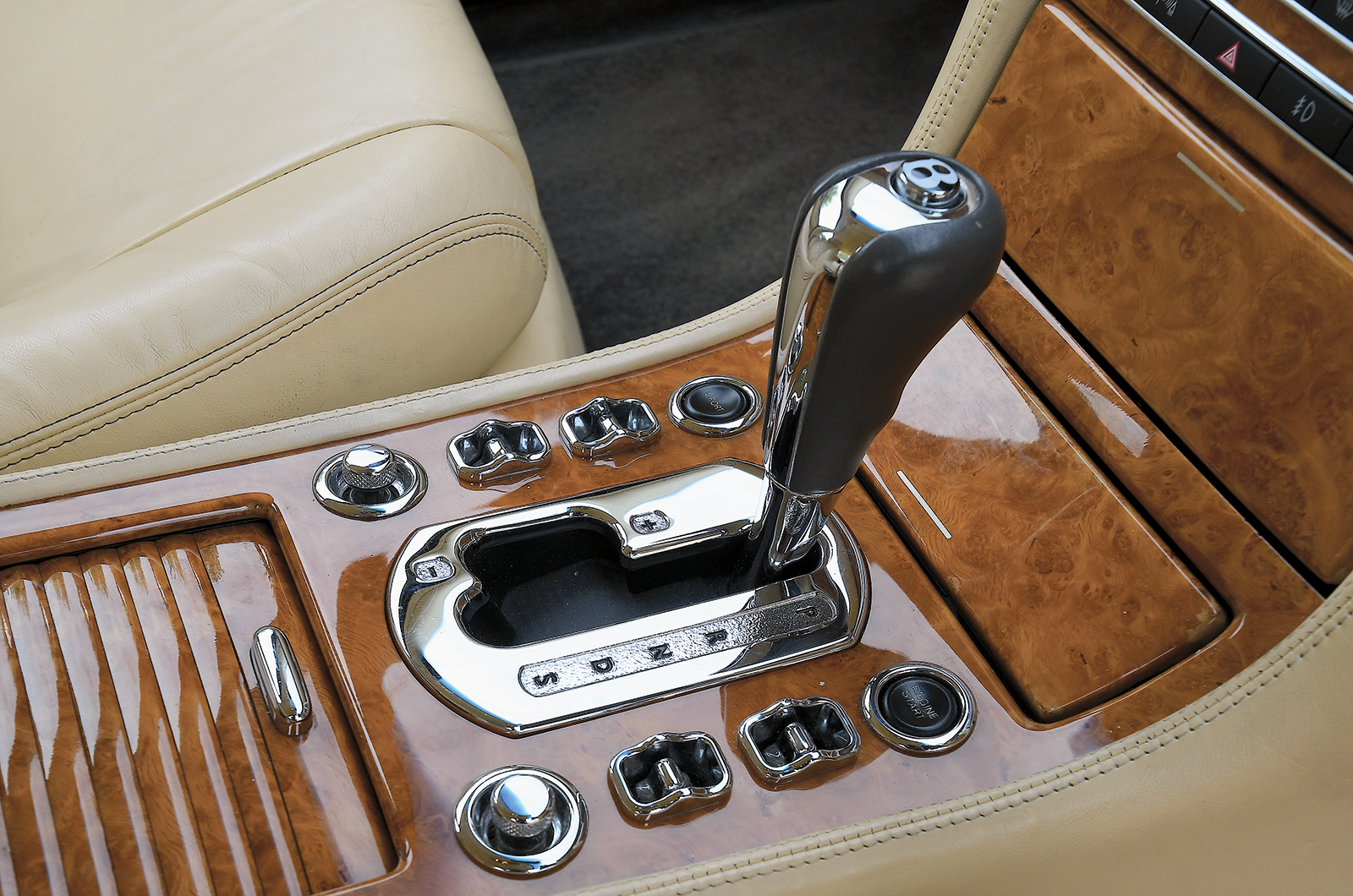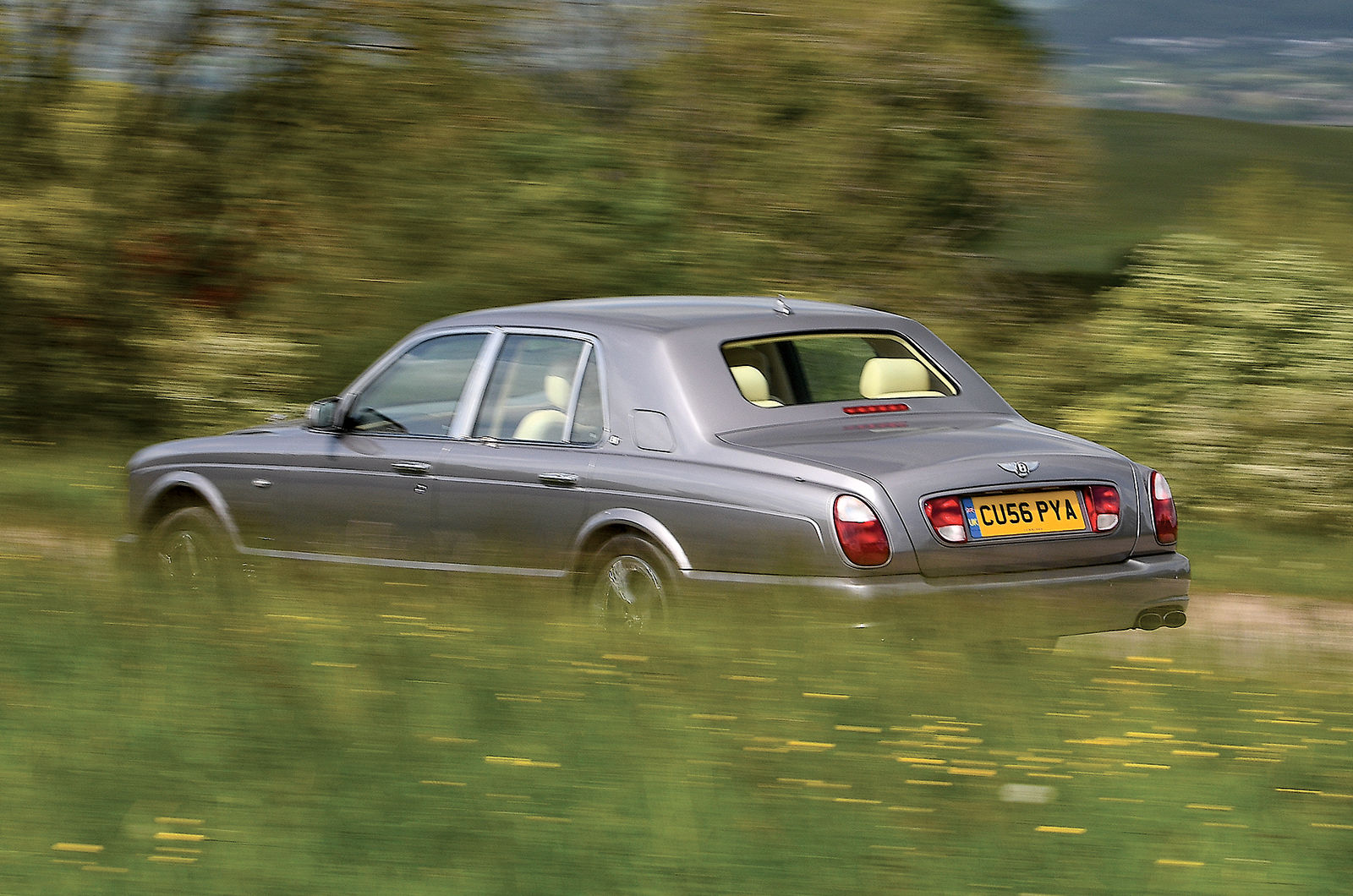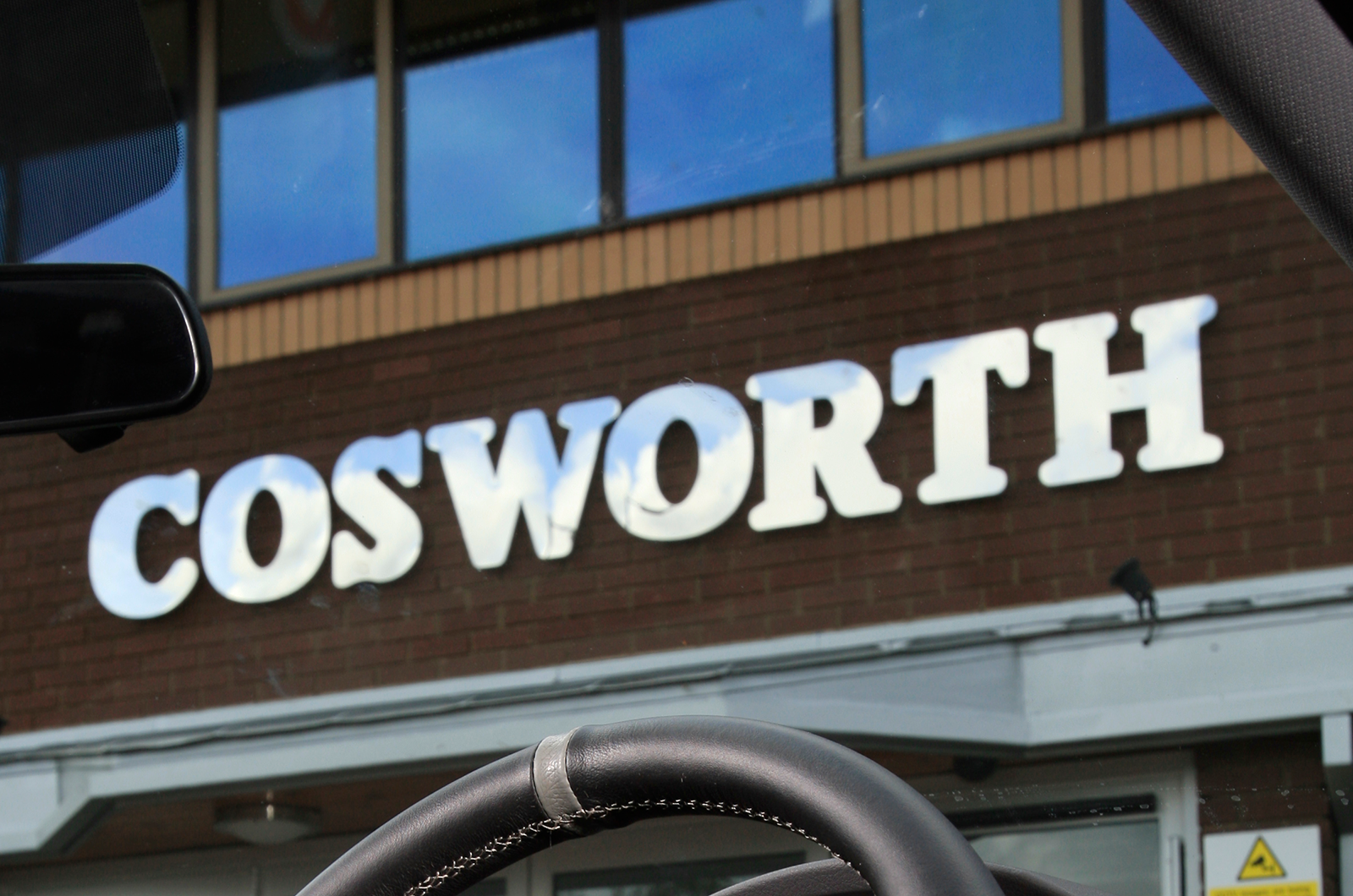I’m actually quite taken by the Rolls from the start, despite its more ritzy chrome flourishes and what remains a slightly ostentatious grille.
Overall it looks more prestigious than either Bentley and is a far rarer sight, so no surprise that it’s the one which elicits the most second glances along our route.
Even with 67,000 miles showing, this Seraph feels near factory-fresh.
You enter the sumptuous cabin through a reassuringly heavy door and find yourself perched, looking towards the Spirit of Ecstasy at the end of the long bonnet.
The Bentley Arnage’s mesh grille is more reserved than the Rolls-Royce’s
Two dials face you – one for speed, the other incorporating multiple read-outs – set into a beautiful veneer-trimmed dash punctuated with organ-stop controls for the chrome vents, and two smaller dials for time and outside temperature.
The only spoiler is the incongruous selection of BMW-sourced plastic buttons spread across the lower centre console.
Pull the column shifter down to Drive, dab the throttle and the engine responds in near-silence, with such a silken delivery and near-imperceptible flow of gearchanges that you often underestimate your road speed.
This classic Bentley is handsome and well resolved
When you do extend your right foot, the engine feels flexible and strangely revvy for a Rolls, although it clearly lacks the torque-laden grunt of its predecessor’s V8.
The ride quality is disappointingly firm – especially at the rear – but Nigel Sandell, who maintains this car, puts that down to the air spheres being overdue a service.
On the upside, for such a large car the Silver Seraph’s body movements are kept well in check, while the steering is nicely weighted, tactile and, as it turns out, is actually more engaging than in either of the two Bentleys.
The Bentley Arnage T has a stiffened body and electronic aids, which help retain dynamic composure
So how far did Crewe go to define Arnage from Seraph?
Subjectively, the BMW-engined Bentley is the best-looking car of the three.
With its mesh grille, chunky 17in five-spoke alloys and minimal body addenda (compared with the T) it’s a bit of a Q-car, and not one in which you’d expect to hit 60mph from rest in 6.3 secs on your way to a 150mph top speed.
Inside, there are five dials grouped in the main binnacle, and the four-spoke steering wheel has a thicker rim, befitting its more sporting remit.
The flying ‘B’ on the Bentley Arnage T
The Arnage’s console-mounted auto shifter is easier to use and better placed than the Royce’s column control.
Fire up the engine, and… is there really a twin-turbocharged, Cosworth-fettled V8 in there?
So untemperamental is BMW’s M72 in this application that, even when extended, it’s the very essence of sobriety: slightly more vocal than the Seraph’s V12, more punchy in its mid-range (although quite tepid from lower revs) and technically an efficient, well-rounded package.
Dynamically, the Arnage matches the Seraph’s composure but adds a fluency to its ride without being too pillowy.
The Arnage T’s slightly revised cabin is opulent
That cars as good as this example can now be bought for as little as a new, mid-spec Vauxhall Corsa somewhat beggars belief.
But nothing, and certainly none of the above, prepares you for the Arnage T.
This is the ultimate iteration of a car that Bentley owners in effect voted for by refusing to buy the BMW-powered Arnage.
It’s a 444bhp, 645lb ft single-finger up to Teutonic efficiency, and a glorious riposte to an ever more politically correct motoring environment.
The old-tech, 6.75-litre, twin-turbo V8 brings shattering pace to the Arnage T
The T was introduced in 2002, and at the time Bentley claimed that 50% of the 6.75-litre V8’s components were new, while 80% of them had been either modified or improved.
A pair of Garrett T3 turbochargers replaced the single blower in the earlier Red Label, and they were allied to the very latest Bosch Motronic ME7 engine management system.
The T’s bodyshell was stiffened even further and its aerodynamics were enhanced to cater for a near-170mph top-speed capability.
The electronic handling package that kept its 5557lb kerbweight in check was also upgraded to be both more subtle and more effective.
The Bentley Arnage T has a smooth four-speed transmission
Visually, two pairs of tailpipes and polished 19in wheels shod with 45-profile Pirelli P-Zeros hint at the T iteration being no ordinary Arnage.
And that’s borne out when you thumb the starter button: there’s a muted woofle at idle and a hint of vibration that would have been anathema to those on Crewe’s BMW programme.
Press down on the heavy throttle and even coaxing the T along at urban speeds takes immense reserve.
Then the road empties: push the pedal deep into the Wilton and there’s a pause before the fireworks erupt, as if the T is gathering itself – after which, all hell breaks loose.
The straight-line performance dominates the Bentley Arnage T driving experience
I’ve driven faster-accelerating cars, but none that mix this much thrust with this much mass.
You don’t hear the turbochargers, only the bellow of that ancient V8 as it propels you to the horizon, barely breaking 4000rpm as it does so.
It’s spellbinding, and feels ever so slightly out of control.
But what a blast, and proof – if ever it were needed – that imperfection can sometimes win the day.
Images: John Bradshaw
Thanks to: Nigel Sandell; Will Bates
The Cosworth connection
Cosworth remains at the forefront of automotive engineering and technology © Autocar
Crewe’s links with Cosworth go back to the late 1980s, when the Wellingborough-based tuning company designed a four-valve, twin-cam cylinder-head conversion for the Rolls-Royce 6.75-litre V8 engine.
In 1990, Vickers, which then owned both Crewe brands, purchased Cosworth, making it a natural choice for any future engine-development work required by Bentley and Rolls-Royce.
Four years later, when BMW was selected as the chosen engine supplier for the upcoming Arnage, Cosworth was commissioned to engineer a turbocharged conversion for its 4.4-litre V8.
Cosworth fitted twin Garrett turbos and raised the engine’s outputs from 282bhp and 310lb ft to a more suitable 350bhp and 413lb ft, although the latter figure was right at the edge of what the car’s ZF automatic ’box would accept.
In 1998, Cosworth was sold by Vickers to the Volkswagen Group as part of the Bentley deal.
The company was divided into Cosworth Technology, retained by Audi, and Cosworth Racing, which was hived off to Ford.
Audi sold Cosworth Technology to Mahle GmbH in 2004.
Factfiles
Rolls-Royce Silver Seraph
- Sold/number built 1998-2002/1570
- Construction steel monocoque
- Engine all-alloy, sohc-per-bank 5379cc V12, with two valves per cylinder and electronic fuel injection
- Max power 322bhp @ 5000rpm
- Max torque 361lb ft @ 3900rpm
- Transmission five-speed ZF automatic, RWD
- Suspension independent, by double wishbones, coil springs, telescopic dampers; front anti-roll bar; adaptive, self-levelling pneumatic spheres at the rear
- Steering power-assisted rack and pinion
- Brakes discs, with servo and anti-lock
- Length 17ft 8¼in (5390mm)
- Width 7ft ½in (2149mm)
- Height 4ft 11½in (1514mm)
- Wheelbase 10ft 2½in (3114mm)
- Weight 5181lb (2350kg)
- Mpg 16
- 0-60mph 7.5 secs
- Top speed 140mph
- Price new £155,000
- Price now £25-55,000*
Bentley Arnage
- Sold/number built 1998-2001/1173
- Construction steel monocoque
- Engine all-alloy, dohc-per-bank 4398cc V8 with four valves per cylinder, two Garrett turbochargers and fuel injection
- Max power 350bhp @ 5500rpm
- Max torque 413lb ft @ 2500rpm
- Transmission five-speed ZF automatic, RWD
- Suspension independent, by double wishbones, coil springs, telescopic dampers; front anti-roll bar; adaptive, self-levelling pneumatic spheres at the rear
- Steering power-assisted rack and pinion
- Brakes discs, with servo and anti-lock
- Length 17ft 8¼in (5390mm)
- Width 7ft ½in (2149mm)
- Height 4ft 11½in (1514mm)
- Wheelbase 10ft 2½in (3114mm)
- Weight 5138lb (2330kg)
- Mpg 13-17
- 0-60mph 6.3 secs
- Top speed 150mph
- Price new £145,000
- Price now £20-35,000*
Bentley Arnage T
- Sold/number built 2002-’09/n/a
- Construction steel monocoque
- Engine all-alloy, ohv, 6750cc V8 with two valves per cylinder, two Garrett T3 turbochargers and fuel injection
- Max power 444bhp @ 4100rpm
- Max torque 645lb ft @ 3250rpm
- Transmission four-speed automatic, RWD
- Suspension independent, by double wishbones, coil springs, telescopic dampers, anti-roll bar f/r; adaptive, self-levelling pneumatic spheres at the rear
- Steering power-assisted rack and pinion
- Brakes discs, with servo and anti-lock
- Length 17ft 8¼in (5390mm)
- Width 7ft ½in (2149mm)
- Height 4ft 11½in (1514mm)
- Wheelbase 10ft 2½in (3114mm)
- Weight 5557lb (2520kg)
- Mpg 13-17
- 0-60mph 5.5 secs
- Top speed 168mph
- Price new £166,500
- Price now £25-45,000*
*Prices correct at date of original publication
Enjoy more of the world’s best classic car content every month when you subscribe to C&SC – get our latest deals here
READ MORE
Perfection? This is a stunning Bentley S2 Park Ward Continental restoration
Glamour models: Mercedes-Benz 280SE 3.5 Coupé vs Rolls-Royce Silver Shadow MPW
Reliving an epic, 8000-mile adventure across India by Rolls-Royce
Simon Hucknall
Simon Hucknall is a senior contributor to Classic & Sports Car



